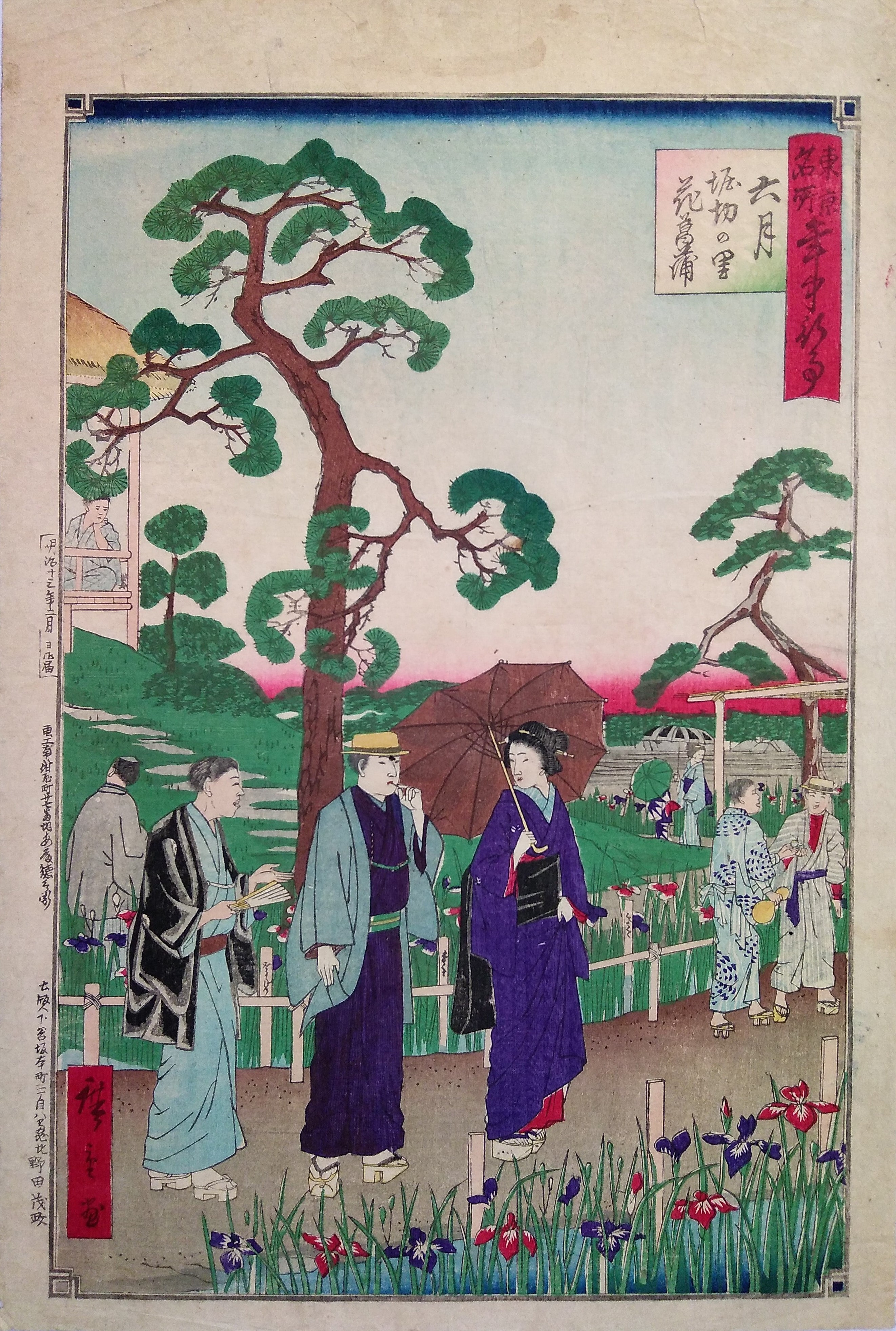Utagawa Hiroshige III
1842 ~ 1894Hiroshige III, born Gotō Torakichi, was an ukiyo-e artist of the Utagawa school, active in the second half of the 19th century.
Initially known by the artistic name Shigemasa, Hiroshige III began his artistic education as a teenager under the renowned Hiroshige I. After the death of his master, he became a student of Hiroshige II. Although Hiroshige II had married Ōtatsu,
Hiroshige I`s daughter, shortly after her father`s death in 1858, their marriage dissolved in 1865. After Hiroshige II retired to Yokohama in 1867, Hiroshige III married Ōtatsu and adopted the name Hiroshige III.
Throughout his career, he used several artist names, including Isshosai, Shigemasa, and Shigetora.
Most of his work included landscapes and famous places in Tōkyō; however, he never achieved the technical skill or the propensity for innovation of his predecessors. Unlike their prints, almost entirely produced during the Edo era, Hiroshige III`s
were created in the Meiji era, a time of astonishing Westernization in Japan, which can be felt in the atmosphere of his prints.
Besides meisho-e (pictures of famous places), he is also recognized for his kaika-e (enlightenment pictures), which depict Japan`s modernization during the Meiji period, including the building of the nation`s first railroads.
 Not for Sale
Not for Sale
On an early summer day, people wearing yukata are having a walk by the Ayase river at horikiri, in the katsushika ward of Tōkyō, for the annual iris flower garden view.
Iris appeared in Japan in the 19th century, when a farmer named Iza`emon began the first cultivation. A great variety of this flower bloomed by the end of the Edo era, so many gardens were created.
Few of the characters in the print are pairing their traditional clothes with western apparel and accessories: the man in the forground is wearing a western style hat while another one in the right is wearing a red shirt under his yukata.
Attires like these were quite common to be seen in the Meiji era, where commoners used to add one or more western accessories (hat, shoes, umbrella etc.) to thier traditional clothes
 Sold Out
Sold Out
